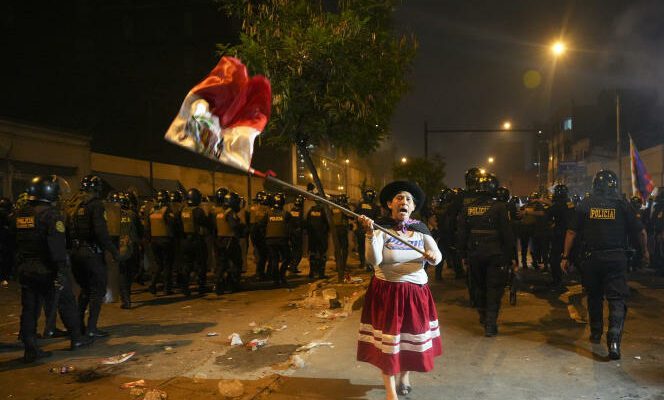“Due to the social situation and to preserve the safety of visitors”, the Peruvian authorities ordered, Saturday, January 21, the closure of access to Machu Picchu, the day after new demonstrations.
A demonstrator succumbed to his injuries on Saturday in Ilave, in the south of the country, after the clashes the day before, announced the local People’s Defender. Since the beginning, on December 7, of the mobilization against President Dina Boluarte, 46 people have been killed.
The train that serves Machu Picchu is the only way to get there apart from walking. The road having been damaged by demonstrators, it has not been circulating for several days. According to the company that operates the line, rails have been removed. At least 400 tourists, including 300 foreigners, are stranded at the foot of the site, in Aguas Calientes. The tourists “cannot leave because the railway has been damaged in different places”Tourism Minister Luis Fernando Helguero said on Friday evening. “Some tourists have chosen to walk to Piscacucho, but it’s a six-hour or more walk and very few people can do it”. Piscacucho is the closest village to Machu Picchu connected to the road network.
In December, tourists had already been stranded in Machu Picchu before being evacuated by a special train, supervised by the police and teams of railway workers to repair the way. Tourism, vital for the economy, represents between 3 and 4% of the GDP and provides employment to all strata of the population.
“I don’t know what they are accused of”
The unrest began after the dismissal and arrest of President Pedro Castillo, accused of having attempted a coup by ordering the dissolution of Parliament which was preparing to oust him from power. The authorities have declared a state of emergency in several regions including Lima and Cuzco, the country’s tourist capital, without stopping the protest movement.
The European Union on Saturday condemned the violence and the use, according to it, “disproportionate” of force by the police. “The EU calls on the government (…) to guarantee an inclusive dialogue with the participation of civil society and the communities concerned”she said in a statement.
The crisis is also a reflection of the huge gap between the capital and the poor provinces that supported President Castillo, of Amerindian origin and member of a Marxist-inspired party, who saw his election as revenge for what they regard as contempt of Lima. In the capital, the day after two days of mobilization, with the arrival of demonstrators from the Andean regions, the situation remains tense.
Members of the security forces broke through the gate of the University of San Marcos, in the city center, with an armored vehicle to expel some of the demonstrators from the provinces who had been sleeping there for several days. The police searched the occupants, sometimes forcing them to lie on the ground in front of the university, AFP journalists noted, before arresting some.
Test your general knowledge with the writing of the “World”
To discover
“I have relatives who are there. I’m worried. We don’t know what can happen. I don’t know what they are accused of.”, lamented Luz Maria Ramirez, 62, from Andahuaylsas (south), epicenter of the demonstrations in December. Lawyers but also prosecutors went on site “to verify the legality of police operations and to guarantee” respect for fundamental rights, according to a press release from the prosecution.
